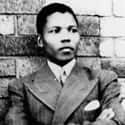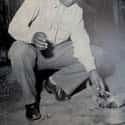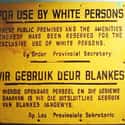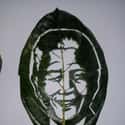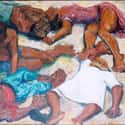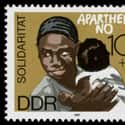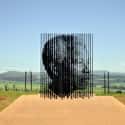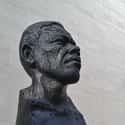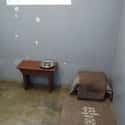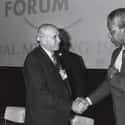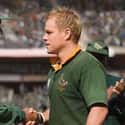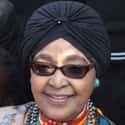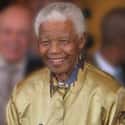-
(#1) He Created South Africa's First Black Law Firm
Nelson Mandela was born Rolihlahla Mandela on July 18, 1918 in a rural area of the Transkei region of South Africa. His name was anglicized to "Nelson" when he became the first member of his family to attend school. At age 9, Mandela's father died, and Nelson was adopted by an influential tribal chieftain. Eventually, however, Mandela's activist bent would make it impossible for him to continue his education in Johannesburg; a family dispute over an arranged marriage and a threatened expulsion over student politics prompted him to flee. However, he managed to complete his education and ultimately enrolled in law school. He eventually founded the first black-partnered law firm in South Africa with another student acquaintance, Oliver Tambo. Mandela and Tambo represented black litigants and defendants who normally would not have been able to afford legal counsel.
-
(#2) He Did More In His Twenties Than Most People Do In Their Lifetimes
From a young age, Nelson Mandela was involved in the political struggle against the racially based South African system of apartheid. He joined the African National Congress in 1942 and immediately set out to turn this organization into a meaningful activist entity by starting the ANC Youth League, a mass movement that incorporated voiceless members of South African black society into the conversation regarding equal rights. This organization aggressively used tactics such as strikes, boycotts, and civil disobedience to effectively oppose the South African government.
-
(#3) When Targeted By The Government, He Launched A Campaign Of Defiance
The South African government began subjecting Nelson Mandela to official restrictions as punishment for his political activism in 1952, barring him from things like traveling and public speaking at will. This was a unique apartheid measure taken against political opponents of the South African government, which maintained the legal ability to restrict the right to assembly and political association. Mandela, in true badass form, ignored the ban and became involved in the 1952 "Defiance Campaign," a concerted effort to disrupt segregated areas and stage other acts of civil disobedience. Over 8,000 people were arrested during the course of the campaign. Most were released with minor penalties, but Mandela and other prominent activists were tried for "statutory communism" and sentenced to suspended prison sentences.
-
(#4) He Was Treasonous And Proud
On December 5, 1956, the South African government arrested 156 leaders from various organizations that were fighting against the apartheid system. Those arrested - including Nelson Mandela - were comprised of all races and backgrounds. Each defendant was charged with treason, precipitating the infamous "Treason Trial," which dragged on for years. The groups' efforts against apartheid were considered "treasonous" because, in the eyes of those in power, they necessarily involved the "violent" overthrow of the existing state.
Special courts were formed with justices handpicked by the government to preside over the proceedings. Indictments were eventually whittled down, however, and the number of defendants shrank to thirty. But it wasn't until until 1961 that the charges were officially dropped. Ultimately, the government was unable to prove that the ANC or any other organization was intent on violently overthrowing the government.
-
(#5) He Said F*ck It To Nonviolence
In the '50s, Mandela and the ANC began to be split into factions, one of which was called the Pan Africanist Congress (PAC). The PAC began an organized campaign designed to protest against the "Pass" system, which was, essentially, an internal passport that black South Africans along with other minority groups were forced to carry within certain segregated territories of South Africa. If their pass was not stamped appropriately, individuals could be detained and arrested. This formal arrangement to impose segregation by geographic access was a major flash point during the apartheid conflict. The head of the PAC announced a nationwide protest against the "Pass," to be held on March 21, 1960. In the town of Sharpville, a crowd of approximately 5,000 protesters surrounded a police station in preparation to turn themselves in and swamp the legal system. Eventually, though, the protest prompted law enforcement to fire sub-machine guns into the crowd, killing at least 69 people and wounding many more.
This action was not only formally condemned by the UN, but it also galvanized the apartheid protest movement in South Africa, including Nelson Mandela. In the aftermath of the massacre, Mandela concluded that non-violence in the face of state violence was ineffectual. So, following the incident, Mandela burnt his passbook before members of the world press.
-
(#6) He Went Underground To Create A Guerrilla Movement
For 17 months, Nelson Mandela went underground to develop an organization that could respond to government violence with sabotage and armed resistance. A formal organization, "Umkhonto we Sizwe", (The Spear of the Nation) became the military organization within the ANC. Mandela left South Africa during much of this time period, spending it receiving training in Morocco with members of the Algerian National Liberation Front, the entity that successfully expelled the French colonial government. Mandela's intent was to establish an external location to train anti-apartheid fighters on an ongoing basis and begin guerrilla warfare in South Africa. During this time period, he further elevated his stature by avoiding arrest from a South African government that was feverishly looking for him. By now being referred to as "The Black Pimpernel," he released a letter that concludes with the words:
"Only through hardship, sacrifice and militant action can freedom be won. The struggle is my life. I will continue fighting for freedom until the end of my days."
-
(#7) He Became A CIA Target
On August 5, 1962, at a remote roadblock in the Kwazulu-Natal region of South Africa, police halted a large automobile containing two passengers, one of whom claimed to be a chauffeur named David Motsamayi. Both men were immediately arrested, and the chauffeur was ultimately identified as most-wanted-man Nelson Mandela.
Ultimately, allegations were made that the CIA was involved in tipping off South African law enforcement about Mandela's whereabouts since the West believed that Mandela was a dangerous communist who would incite a revolution and precipitate a Russian-backed armed conflict that might require American intervention. At the time, Mandela was considered to be a radical working in conjunction with the Soviet Union. Until 2012, the arrest site was marked with a simple plaque. Today, an elaborate sculpture marks the spot where Nelson Mandela began the most difficult part of the journey he ultimately described as "the long walk to freedom."
-
(#8) He Was Fully "Prepared To Die"
In 1962, Nelson Mandela was charged with "incitement to strike" and "leaving the country illegally." During legal proceedings, he remained defiant, wearing traditional tribal dress made of animal hides, ignoring legal procedure in the courtroom, and using his testimony as an opportunity for political speech. As a result, he was convicted and sentenced to five years in prison.
While Mandela was incarcerated, police were able to uncover the secret ANC headquarters and meeting place on the outskirts of Johannesburg. 19 members of various anti-government groups were arrested, and incriminating documents implicating Mandela and various other members of the ANC were discovered. In what became known as the "Rivonia" trial, Mandela and 10 other defendants were charged with sabotage and attempting to violently overthrow the government. Nelson Mandela delivered his most famous speech as an opening statement in this trial. The speech lasted for three hours, included a detailed explanation of the ANC's core beliefs, explained the organization's justification for violence and concluded with the words, "I am prepared to die."
The speech reverberated around the world, and the final phrase became the credo of the anti-apartheid movement in South Africa.
-
(#9) He Was Imprisoned For Life And Still Refused To Negotiate
Nelson Mandela's trial drew protest from around the world over his anticipated death penalty. However - possibly because of this international pressure on the South African government - even though all but one of the defendants were convicted, none, including Mandela, were condemned to death. Instead the 10 convicted men were sentenced to life imprisonment. One white defendant served his sentence in Pretoria, and the rest were sent to the notorious Robben Island facility, a segregated prison for black inmates only. Conditions there were incredibly harsh and included forced labor in a quarry. Upon arrival, Mandela and the other prisoners were greeted with white warders shouting "This is the island! Here you will die!"
Over time, the South African government offered Nelson Mandela conditional opportunities for release. He repeatedly refused these opportunities to negotiate, however, even after decades of imprisonment.
-
(#10) He Served His Sentence In The Most Dangerous Prison In South Africa
Nelson Mandela spent 18 of his 27 total years of imprisonment at the notorious Robben Island. The South African government eventually transferred him to another facility, hoping that if he was isolated away from his former ANC brethren, he might be more willing to cooperating with the regime. Mandela, however, remained intractable, and as the system of apartheid became untenable as a result of international sanctions, the South African president, FW De Klerk, made the decision to not only release Mandela but to also legalize the ANC and various other political entities opposed to apartheid. This did not mean the end of political and social oppression in South Africa. De Klerk and Mandela would later begin the negotiations that would fundamentally change South African politics and society.
-
(#11) He Managed To Negotiate A Peaceful End To Apartheid
Nelson Mandela and FW de Klerk spent years attempting to assemble a transition that would satisfy a black majority that had been treated unjustly and a white minority that feared retribution and even violent expulsion from their homeland. Eventually, a multi-racial transition team was formulated, the constitution was rewritten, and a free-election date was set. But the most impressive aspect of Mandela's involvement in this process was his decision not to seek retribution or revenge against the former perpetrators of apartheid. He refused demands for an international tribunal and instead called for a spirit of reconciliation and rebirth. South Africa remained a violent and politically polarized society, but few could criticize the perspective of Mandela, who, after 27 years of imprisonment, could have easily decided not to turn the other cheek. For their collaboration and transformational attitudes, Nelson Mandela and PW de Klerk shared the 1993 Nobel Peace Prize.
-
(#12) He Was The First President Elected By Universal Suffrage
In their apartheid-ending negotiations, Mandela and de Klerk agreed that free elections would be a part of the fundamental changes to South African society. As a result, in April of 1994, Nelson Mandela was elected President of the country's first multi-racial government, running unopposed. The ANC won 62% of the vote along with the majority of the seats in the National Assembly. Mandela attempted immediate measures to improve the standard of living for black South Africans and continued to support a policy of national reconciliation and patriotism. He helped finalize the process for the adoption of a democratic constitution. Towards the end of his first term, Mandela began the gradual transferral of his political power to other members of the ANC.
-
(#13) He Really Did The Things That Happen In The Movie "Invictus"
The South African national rugby team known as the "Springboks" was a longtime, beloved symbol of the white minority, who worshipped the team despite a sports boycott that prevented it from international competition. This boycott ended in 1993, and Nelson Mandela was urged to change the uniform and logos of the team, which were perceived as symbols of apartheid. Instead, Mandela, keeping with his desire for reconciliation, decided to urge a new nationwide acceptance of the almost completely white team as another symbol of national reconciliation.
In 1995, the year South Africa was allowed back into international competition, the Sprigboks began a dream run in the Rugby World Cup, which resulted in a finals match against New Zealand, the overwhelming favorite. Before the game, the "Boks" visited Mandela's former Robben Island cell for inspiration and sang both versions of the national anthem, which was usually sung along racial lines. Nelson Mandela greeted the players dressed in a Springboks jersey and cap, in a Johannesburg stadium filled with over 60,000 people. As the film recounts, the game dramatically reached overtime with South Africa prevailing, 15-12. Mandela presented the trophy to team captain Francois Pienaar, a moment that was viewed in South Africa as a nationally transcendent event.
-
(#14) He Married A Fellow Badass Human Rights Activist
Winnie Madikizela met Nelson Mandela when she was 22. They married a year later in 1958 and had two children before Nelson's arrest in 1963. Winnie became a vocal opponent of apartheid, and, like her husband, she was repeatedly jailed, tortured, and harassed by the South African government. Her persecution was viewed internationally as a symbol of the brutality and inhumanity of the system of apartheid. Ruffling feathers of her own, Winnie Mandela became controversial over her endorsement of violence against political opponents and allegations of criminal conduct. Although the Mandelas were officially married at the time of Nelson's release, they quickly separated in 1992. Ultimately, she would be prosecuted for financial fraud, would criticize her ex-husband, and would generally remain a divisive figure who never embraced the spirit of national reconciliation.
-
(#15) He Didn't Even Stop Fighting In His Nineties
Nelson Mandela died on December 5, 2013, aged 95. Following his retirement from politics in the late '90s, Mandela continued his activism in advancing various humanitarian causes. These endeavors included highly visible foundational efforts to combat AIDS, provide Rhodes scholarships to African scholars, and efforts to improve public health in underprivileged societies. Mandela was instrumental in bringing the 2010 World Cup to South Africa and established the Nelson Mandela Foundation, dedicated to addressing global concerns and increasing awareness of challenges to democracy and human rights. He was vocally critical of the 2003 invasion of Iraq and also criticized Robert Mugabe, the dictatorial leader of Zimbabwe. He was universally mourned, and his funeral in Johannesburg was attended by approximately 90 world leaders, including President Barack Obama.
New Random Displays Display All By Ranking
About This Tool
On February 11, 1990, Nelson Mandela was released from prison after 27 years of arrest and soon continued to serve as President of South Africa. Even after his death, his great spirit and deeds inspired countless people to advocate for peace and social justice. Mandela was an active anti-apartheidist, after entering politics, he successfully organized and led the "Contempt of Unjust Acts Movement" and won the respect of all blacks.
Mandela received praise from all over the world, including winning the 1993 Nobel Peace Prize in recognition of his contributions to South Africa and world peace. The random tool introduced 15 fascinating facts about the difficult but inspiring life of Nelson Mandela.
Our data comes from Ranker, If you want to participate in the ranking of items displayed on this page, please click here.











